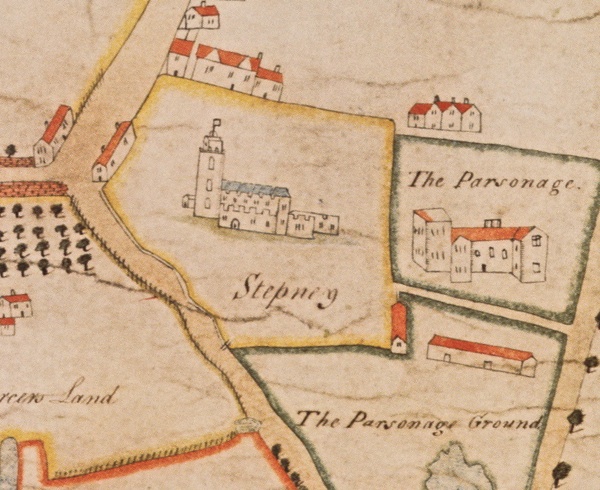Some bits and pieces on the area of Stepney inhabited by my great grandfather, Charles Edward Robb, and his family.
First, an extract from Booth’s Poverty Survey of 1898, found on the St. George in the East website:
South down Well St & east along Gracies [sic] Alley. Black on map, now purple to pink, Wesleyan East End Mission takes up a large part of the north side. Formerly brothels now none. It is a clean paved way with shops on either side, one a German restaurant. Into Wellclose Square. The NW side (d.b. on map) is now taken up by a Roman Catholic mission to sailors & new warehouses, some still building: pink now. North up Shorter St the SE corner of which is down & new warehouses make the SW side. On the E side is a small ct of 2 ho, l.b., not marked on map. The rest of the st is purple to pink rather than l.b.
The colours (and abbreviations of them) refer to Booth’s coding of streets according to the relative wealth / poverty of their inhabitants (follow the web link above for details).
I was interested to read that the Wesleyan Mission was located on the north side of Grace’s Alley. Could it be that when Charles’ son Joseph was living here, his address was the Mission, which at one time employed his father as caretaker? I’m also not sure if the Mission premises were identical with those of Wilton’s Music Hall, which it took over at around this time. According to the London Metropolitan Archives website:
In 1885 the Wesleyan Methodist Church established its first Mission at Saint George’s Church, Cable Street, Shadwell, with the Reverend Peter Thompson as Superintendent. The Church aimed to combat the poverty and squalor of the East End of London with a combination of evangelism and social work. The Mission at Saint George’s rapidly expanded and new Missions were opened at Stepney, Mile End, Bethnal Green and Tower Hill. Free meals were handed out during hard winters, medical care was provided and events were organised for children including trips to the sea-side, penny films and Christmas treats. The Mission also campaigned on political issues, particularly for temperance and the closure of Music Halls.
There’s an amusing story, in Tracy Davis’ book about Victorian actresses, about two pious ladies from the Mission happening upon Wilton’s in the days when it was still (to them) a den of vice:
Mrs. Reginald Radcliffe and Miss Macpherson were passing through Grace’s Alley into Wellclose Square as the evening performances in the music-hall were proceeding. The dreadful hubbub that came from the hall startled them. They paused to listen, and were so impressed that they paid the admission fee and went in to see really what could be going on. The sights on the stage and the entire condition of things became so awful to them, that they fell down on their knees together, in the centre of the hall, and in view of the stage and crowd of onlookers, prayed that God would break the power of the devil in the place, and bring the premises into the use of Christian people.
What the audience of working-class Londoners, out for an innocent evening’s entertainment, made of all this is anyone’s guess. Anyway, the upshot, as the author reminds us, was that the Mission bought Wilton’s, just as other religious zealots took over similar properties around London and converted them to more ‘moral’ purposes.
Here’s a photo of Wilton’s Music Hall:

And here are a couple of pictures of Wellclose Square some time in the 19th century:



Hi
Yes the Wesleyan Mission was the same building as Wiltons aka The Old Ebony Bar or Ebony Bar. I have an elderly cousin who lived nearby and recalls attending a Sunday school there. She insists that it is the same place that had previously been Wiltons.
Thanks for this, Ed. Can you provide any more details of when your cousin attended the Sunday School and anything else she remembers about it?
Hi Martin – I just came across your website and reference to Wilton’s and the Mahogany Bar Mission and was wondering when Charles was caretaker there and any other info you have about Charles and Joseph’s association with the mission?